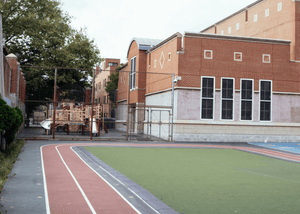Water Quality InformationWritten By Actual Experts
RSSStagnant Water and Lead in School Pipes Are a Health Risk To Children
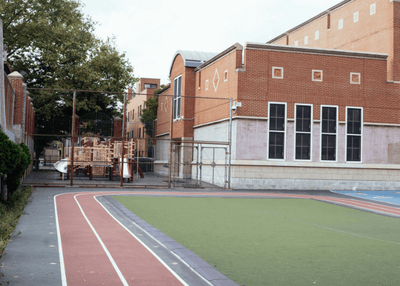
New York Passes Bill To Reduce Lead In School Drinking Water
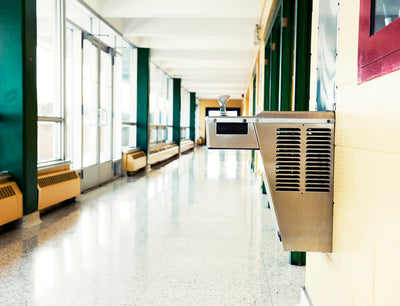
Christina Liu | Hydroviv Science Team
The New York State Legislature recently passed a bill to help make drinking water in schools safer. National Resources Defense Council (NRDC) reported that this bill lowers the Action Level of lead detected at school drinking water taps from the current EPA Action Level of 15 parts per billion (ppb) down to 5 ppb, which is the bottled water lead concentration limit set by the Food and Drug Administration (FDA). The EPA, CDC and the American Academy of Pediatrics (AAP) all recognize that there is no safe level of lead for children. However, the 5 ppb Action Level is much closer to the recommended lead level recommended by the AAP of 1 ppb, so it is a major step forward in helping New York school children access safer drinking water in schools.
The Noah System: Lead-Free Drinking Water For America's Schools
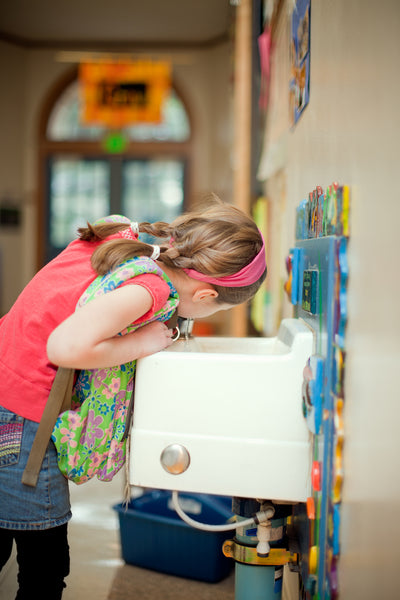
Analies Dyjak, M.A. and Michael Ramos
The unresolved lead crisis in the United States disproportionately impacts young children - especially those in underserved communities. Many schools in the United States were built before 1986, when the use of lead in pipes and plumbing was still allowed. School-aged children who drink water from drinking fountains are exposed to unsafe lead levels on a daily basis. Michael Ramos, the Founder of The Noah System, created a device that automatically flushes water in drinking fountains to reduce the high lead levels in schools.
Why Are We Concerned With Lead in Drinking Water?
Babies and children are the most vulnerable to the long lasting impacts of lead exposure. Lead is a neurotoxin, and can cause lifelong irreversible damages to the brain. Children do not have a fully developed blood-brain barrier, making it easier for “unknown substances,” including lead, to cross into the Central Nervous System. Lead can be mistaken for calcium, in which the body can absorb lead as it would calcium in the brain, blood, bones, and soft tissue. The long term health effects include: slowed growth and development, learning and behavior problems, lowered IQ, attention deficit, hearing and speech problems, and underperformance in schools. Lead was also associated with Autism in a recent study by the National Institutes of Health. According to the Environmental Protection Agency, Centers for Disease Control, and American Academy of Pediatrics, there is no safe level of lead for children. The current allowable level of lead in drinking water in the United States is 15 parts per billion.
The Noah System and The Flint Lead Crisis
Michael Ramos is an engineer for Chicago Public Schools. In February of 2016, like most of the country, he watched as the failures of elected officials crippled the City of Flint, Michigan. Flint officials switched the source water from Lake Huron to the Flint River without considering a corrosion control inhibitor to reduce lead. As a result, 9,000 children under the age of 6 were exposed to unsafe levels of lead. Mr. Ramos thought of his own children, and the children he represented throughout Chicago Public Schools. He started to watch congressional hearings and grew even more concerned when the EPA officials stated that “lead in drinking water would be one of the most challenging tasks the country was going to face.” Chicago has its own ongoing issues with lead in drinking water, which he realized had not been mitigated when a school district detected 3,000 parts per billion (200 times over EPA’s Action Level).
Chicago Has Lead Mitigation Tools In Place. Why Did They Fail?
Many cities across the country, including Chicago, use a chemical called Orthophosphate to help reduce lead levels in drinking water. In order for Orthophosphate to be effective, water must run through the pipes once every 6 hours to build an anti-corrosive crust. Mr. Ramos realized that the drinking water in most schools sits stagnant in pipes for hours - well beyond the 6 hour stagnation period. Orthophosphate is unable to coat the inside of pipes when water sits stagnant overnight, over the weekends, or during school vacations.
Mr. Ramos noted that several school districts across the country flush their pipes in August, as students are getting ready to go back to school. As we now understand, it doesn’t take long for lead to collect in distribution pipes and reach unsafe levels for children. Mr. Ramos noted that a single-flushing event at the beginning of the school year “was not sufficient to make a meaningful impact on lead levels.” In short, lead levels in schools drinking water can be directly correlated to long periods of stagnation.
How Did The Noah System Come To Be?
Mr. Ramos wanted to first ensure that the water coming into his own home was free of lead. “I built a machine that would automatically flush water from the cold water line coming into my house. I took the 6 hour stagnation period and cut it in half, so water would flow through the pipes every 3 hours.” This would allow sufficient time for the Orthophosphate to build a protective crust and significantly reduce lead levels at the tap. He then asked himself: “How do I take what I built in my house and retrofit it for schools?” Mr. Ramos determined that The Noah System could be installed directly in drinking water fountains, and began building systems from his home workshop. In October of 2016, Michael Ramos installed his first Noah System in a Chicago Public School.
How Many Schools Currently Have The Noah System?
Several schools, universities, and office buildings across the country currently use The Noah System.
How Can I Learn More About The Noah System?
You can learn more about The Noah System by visiting https://www.noahsystem.co/. You can also get in touch via email by submitting your information here: https://www.noahsystem.co/pages/contact. You can schedule a free consultation by calling 708-320-3197.
Other Articles We Think You might Enjoy:What Are "Forever Chemicals" And Why Are In My Tap Water?
Do TDS Meters Provide Meaningful Information About Drinking Water?
How Did Hydroviv Filters Perform in a Duke/NC State Water Filter Study?
Does New York City's Tap Water Have a Lead Problem?

Why Do So Many Schools Have Lead in the Drinking Water?
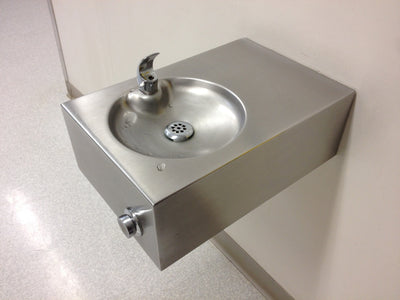
Eric Roy, Ph.D. | Scientific Founder
With schools in major cities across the country testing positive for lead contamination (e.g. New York City, Cleveland, Chicago, Portland, Newark, San Francisco), we get lots of questions about what’s happening. The goal of this article is to shed some light on why lead in school drinking water is such an important thing.
There is no level of lead that is known to be safe for children. Period.
Since lead contamination in tap water entered the spotlight in 2015, people have incorrectly presented EPA's regulatory limits as safe/not safe thresholds. While a simple safe/unsafe threshold would certainly make things more simple, the 15 ppb threshold was never intended to be a "safe level." It’s a limit that EPA established to evaluate city-wide corrosion control practices and it allows a city to have up to 10% of samples test ABOVE the 15 ppb threshold, and still be in compliance with the Lead and Copper Rule. For reference, the American Academy of Pediatrics is calling for regulatory changes that ensure that water never tests above 1 ppb in schools.
Most Schools Are Old & Old Plumbing Often Contains Lead
According to data assembled by the U.S. Department of Education, the average age of a Public School building in the United States is 44 years old, a time when lead-based plumbing was the norm. Even in newer schools, lead contamination can creep into water because lead wasn’t completely phased out of plumbing connections, fittings, and valves until 2014.
Weekends & Summers Allow Water To Sit Stagnant For Extended Periods Of Time In Schools
As many now realize, lead accumulates in water when it leaches from lead-containing pipes, valves, and plumbing connections. The longer water sits stagnant in pipes, the more lead it can accumulate. Unlike in homes, where water is used on a daily basis and never sits stagnant for more than a few hours each night, water in schools goes completely unused for long periods of time each weekend, vacation, and summer. These frequent long periods where water is not used are detrimental for two reasons:
- Lead has more time to accumulate as water sits stagnant in lead-containing pipes
- The lack of flushing prevents corrosion measures from rebuilding the protective layer that prevents lead from leaching out in the first place.
Most Schools Do Not Test Water Properly For Lead Contamination
It sounds crazy, but most schools don’t test for lead contamination in water. When asked by a reporter about testing the school’s water for lead, an elementary school superintendent went on record to say that "We do not test because it has never been brought up as a concern, nor is it a requirement to do so."
The reality is, even if schools choose to test for lead contamination, it’s much more complicated than testing in a residential home. In a residential home, EPA sampling protocols require that water be unused for 6 hours, in order to simulate the night and work day periods where water commonly sits stagnant in pipes. However, this protocol does not mimic how water is used in schools, because in addition to the 12 hours each school night the water goes unused, it sits stagnant for roughly 60 hours each weekend, and much longer periods over school vacations and summer.
How Can Schools Reduce Lead Contamination In Drinking Water?
Realistically, it’s probably cost-prohibitive for schools to replace all lead-containing plumbing or buy and maintain effective point of use drinking water filters that remove lead. When school administrators approach us for solutions, we always advise them to take immediate steps to identify lead containing plumbing, test their water for lead, and to implement regular pipe flushing protocols.
We encourage everyone to call their city's school department to better understand if and how lead is being tested for in schools. Because testing in schools is very complicated, we encourage people to ask for specifics of the testing program and actual results, not blanket assurances that everything is ok.
What Can I Do About Lead In Schools?
While replacements to lead service lines are taking place in many cities across the country, improvements to the water supply won’t happen overnight. Here are 4 things you can do in the meantime to help keep your school children safe from lead-contaminated water in the school buildings:
-
Check your Filters. If you are packing water for your child, please check to make sure you are using a filter that is certified for lead removal.
-
Get informed. Ask school administrators whether the drinking water in your child’s school has been tested for lead and ask to see the results. Information on lead in drinking water, testing methods, and steps you can take to minimize exposure is available from the Safe Drinking Water Hotline or on the EPA’s page: Basic Information about Lead in Drinking Water.
-
Be an Advocate. Encourage your school or district to install water dispensers or drinking fountains that use filters certified for lead removal.
-
Spread the word. Talk to your child’s pediatrician, school nurse, teacher, and your school’s parent-teacher association about lead in the drinking water in schools. Inform them that the American Academy of Pediatrics recommends 1 ppb to be a safe level of lead in drinking water.
Originally published on January 28, 2017. Updated August 17, 2022.
Related Articles:
Does New York City Tap Water Have A Lead Contamination Problem?
The Noah System: Lead-Free Drinking Water for America’s Schools
The American Jobs Plan to Allocate $111 Billion To Water Infrastructure Improvements


